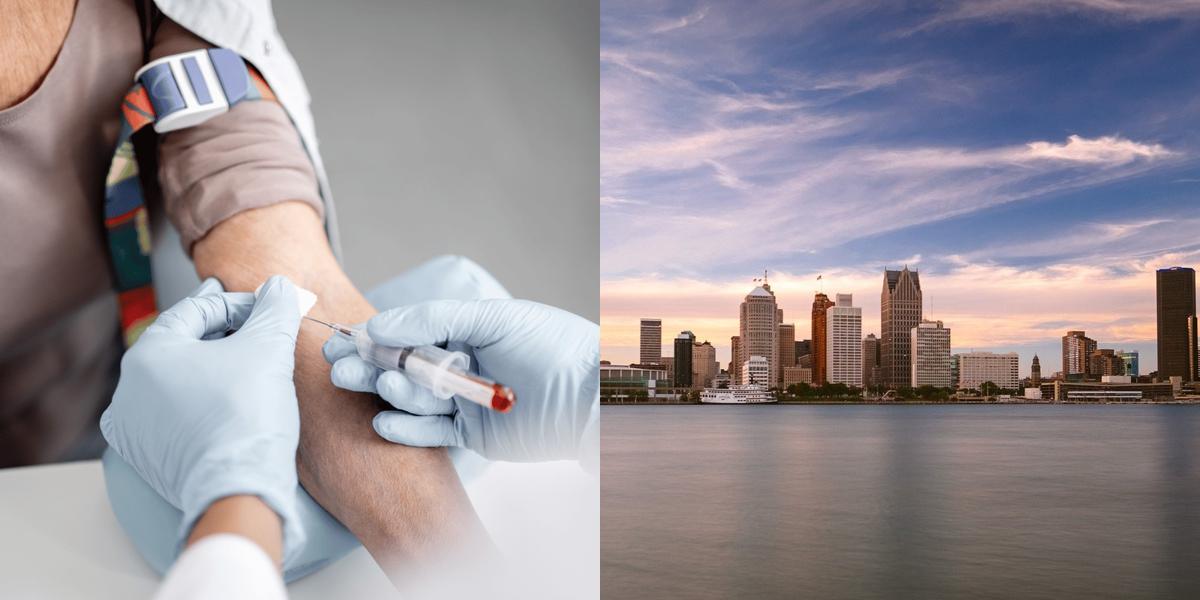How to Become a Phlebotomist in Michigan

Phlebotomy is more than just drawing blood; it’s a critical healthcare role requiring precision, patient care, and adherence to strict safety protocols. With the demand for medical testing and transfusions on the rise, phlebotomists play an essential part in the healthcare industry. According to the Bureau of Labor Statistics (BLS), phlebotomy jobs are projected to grow by 8% from 2023 to 2033, creating stable career opportunities in Michigan and across the U.S.
Key Points
-
A Phlebotomist is a healthcare professional trained to draw blood for medical testing, transfusions, and research while ensuring patient safety and comfort.
-
To become a Phlebotomist in Michigan, complete a phlebotomy training program, pass a background check, obtain updated immunizations, and earn certification (preferred by employers).
-
It typically takes 4 to 8 weeks to complete a training program.
-
Phlebotomy training costs range from $1,200 to $2,500, with potential tuition reimbursement through healthcare employers.
-
The average Phlebotomist salary in Michigan is $41,510 annually ($19.96/hour) (BLS, 2023).
Where to Find Phlebotomy Classes in Michigan
Phlebotomy training programs in Michigan are offered at community colleges, vocational schools, and healthcare institutes. These programs typically cost between $1,200 and $2,500, with training durations ranging from 4 to 8 weeks. Some schools offer financial aid, flexible payment plans, or employer-sponsored tuition reimbursement to help cover costs.
If you're looking for a convenient way to find "phlebotomy classes near me", Dreambound simplifies the search process. You can explore programs available in Detroit, Grand Rapids, Ann Arbor, Lansing, Flint, Sterling Heights, Warren, and more, including online options. Simply enter your ZIP code to discover the best local or virtual phlebotomy training programs that fit your schedule.
For more details on how to become a phlebotomist anywhere in the U.S., check out our comprehensive guide. It covers essential topics like training steps, certification requirements, job opportunities, and salary expectations by state, helping you make an informed career decision.
Career Paths and Opportunities after Becoming a Phlebotomist
After becoming a certified phlebotomist, you can explore various career paths and opportunities. Here are some potential directions to advance your career:
-
Advancement Within Phlebotomy: Move into leadership roles like phlebotomy supervisor or manager, overseeing teams and ensuring quality control.
-
Specialization in Phlebotomy: Focus on areas such as pediatric or geriatric phlebotomy, or perform specialized procedures like arterial blood gas collection.
-
Further Education and Training: Pursue additional education to become a medical laboratory technician or technologist, expanding your role in the lab.
-
Healthcare Administration: Transition into roles managing healthcare facilities, laboratory operations, or working in quality assurance and compliance.
-
Nursing or Medical Assisting: Use your phlebotomy experience as a foundation to pursue careers in nursing or medical assisting with further education and training.
-
Teaching and Training: Become a phlebotomy instructor or trainer to share your expertise and contribute to the field’s growth.
Frequently Asked Questions
How much does a phlebotomist make in Michigan?
According to the Bureau of Labor Statistics (BLS), phlebotomists in Michigan earn an average annual salary of approximately $41,510. Salaries can vary depending on factors such as experience, location, and the specific employer.
What is the shortest time to become a phlebotomist?
Accelerated training programs can be completed in as little as 4 weeks, but certification and job placement may take additional time.
Where do Phlebotomists get paid the most?
Phlebotomists earn the highest salaries in states like California, New York, and Washington, where wages can exceed $50,000 per year due to high demand and cost of living.
Is phlebotomy easier than CNA?
Difficulty depends on personal preferences! Phlebotomy is often considered easier in terms of physical demands since it involves less strenuous tasks compared to a CNA’s role. Additionally, phlebotomy training is usually shorter, taking 4-8 weeks. While CNA programs last 4-12 weeks.
Final Thoughts
Becoming a certified phlebotomist can be a rewarding career choice, offering job stability, opportunities for advancement, and the ability to make a positive impact on patients' lives. By following the steps outlined above, you can obtain your phlebotomy certification, secure a job as a phlebotomist, and explore various career paths within the field. Remember to stay updated with the latest industry trends and continue to enhance your skills through ongoing education and training.
Looking for a better fit? These other articles could be more in line with your expectations if this one isn't precisely what you had in mind:

Athena is Co-founder and CEO of Dreambound.




